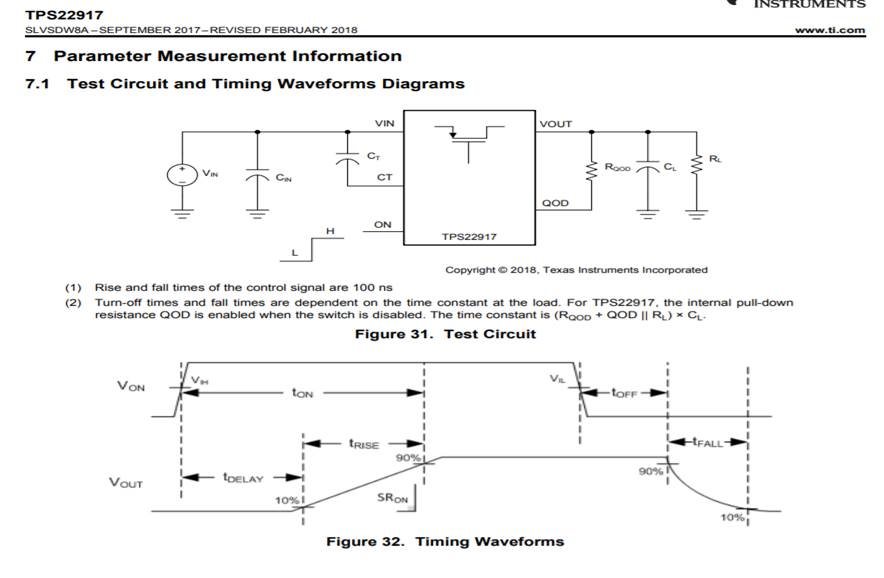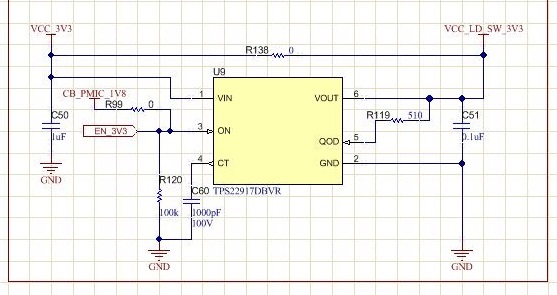Other Parts Discussed in Thread: TPS22917,
Hi Alek,
We have used TPS22917 IC as you have suggested which will add only reverse blocking protection compare to TPS22918 load switch. We are seeing difference for the CT pin as it is connected to GND in the TPS22918 datasheet and it is connected to VCC in the TPS22917 datasheet. We have used TPS22917 IC and connected to GND and please let me know what will happen if it is connected to GND. Please find the attached images for your reference.
Please let me know why CT circuit is different in both datasheets. 
Regards,
Sathyasai




